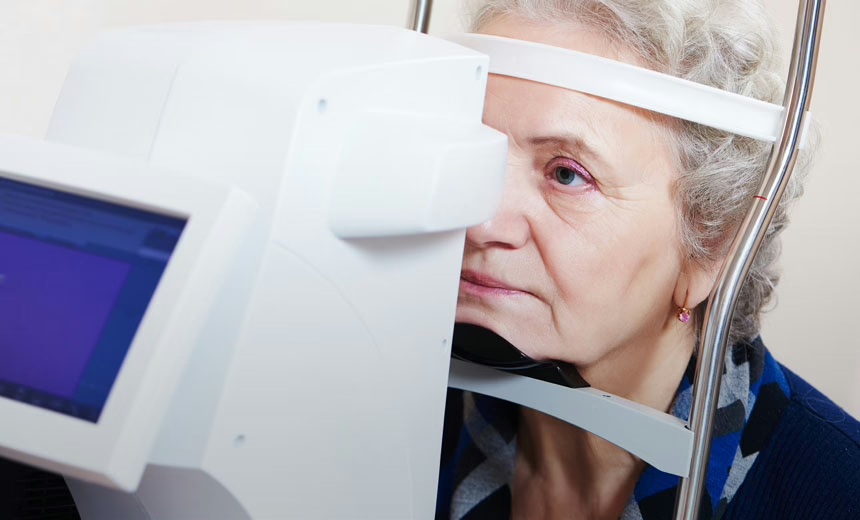"*" indicates required fields
Stroke and vision loss
20/12/2017

Every 10 minutes, a person in Australia has a stroke. A stroke happens when part of the brain does not receive enough oxygen, either because there was a blood clot or a bleed in the brain. People suffer from a range of different problems after a stroke, depending on where in the brain the oxygen starvation occurred. This includes difficulty with mobility, speech, muscle control and, commonly, vision. In fact, approximately one-third of stroke survivors experience vision loss. Most people recover some vision after a stroke – usually in the first few months – with rehabilitation and treatment.
Why does a stroke affect vision?
Your eyes send information to different parts of the brain to produce the image that you see. If a stroke damages part of the brain that normally controls vision, a person’s sight will be affected. How it is affected depends on the location and severity of the stroke.
The most common ways a stroke affects vision are:
-
Visual field loss
A stroke can cause vision loss in some or all of your field of vision (the entire area you see when your eyes are fixed on a position, including both central and side vision). Most commonly, people experience loss of the whole right or left side of their visual field, for both eyes. This is called hemianopia. In other cases, a quarter of the visual field is lost, known as quadrantanopia. Visual field problems can be treated using optical therapy, which involves using mirrors or prisms (special lenses that bend light) to move images from the blind area to the seeing side. Vision restoration therapy (VRT) is another possible treatment option. A computer program is used to encourage the brain to create new pathways to process visual information after existing pathways have been cut off by stroke damage.
-
Eye movement problems
After a stroke, it can be difficult to coordinate eye movement and focus your eyes. This is because nerves and facial muscles that normally control how your eyes move may be damaged. When the eyes stop working as a pair, it can lead to blurred vision, double vision (diplopia) and/or crossed eyes (strabismus). Muscle and nerve damage can also lead to droopy eyelids (ptosis) or enlarged pupils. Being unable to control your eyes can make judging depth and movement, and recognising objects and people difficult, which can impact your ability to walk, read and do other activities. Eye movement therapy or eye muscle surgery may be used to treat these problems, depending on the extent of vision impairment.
-
Dry eye
Damage to the nerves or muscles of the eyelids and face can cause dry eye because blinking may be reduced and/or you may not be able to close your eyelids properly, even when you’re sleeping. Artificial tears and other treatments can be used for dry eye.
-
Visual neglect
A stroke may cause the brain to neglect processing information from the eyes. People suffering from visual neglect are unaware of the objects on one side of their body and do not respond to them. Sometimes this occurs along with visual field loss. Visual neglect can make people eat food from only half of the plate or shave only half of their face, because they are unaware of the other side. Therapy and rehabilitation can help retrain the brain to recognise the neglected side and people normally recover fully over time.
-
Visual hallucinations
People who have lost some sight after a stroke may start to see things that are not really there (e.g. patterns, shapes, colours, or detailed images of people, places and things). This is the brain’s way of reacting to sight loss. These tend to resolve after several months.
Who can help me?
Visual disturbances caused by a stroke can be treated and some vision can be restored for most people. Your doctor may refer you to various eye care specialists to diagnose and treat stroke-related vision problems. The different people involved in your treatment and rehabilitation can include:
- Orthoptists – eye care practitioners who detect, diagnose and treat vision and eye disorders, with specific knowledge of eye movement disorders
- Optometrists – eye care practitioners who screen for eye disease and vision problems, and can prescribe glasses/contact lenses
- Neuro-ophthalmologists – medical doctors who have specialist knowledge of the eye and the brain, and how they interact. They are able to diagnose and treat visual symptoms caused by a neurologic condition (e.g. stroke), including through surgical treatments.
Enjoyed this article?
More articles by this author
Dr Raj P PathmarajMore articles on this subject
Neuro-ophthalmologyThe information on this page is general in nature. All medical and surgical procedures have potential benefits and risks. Consult your ophthalmologist for specific medical advice.
Date last reviewed: 2023-05-19 | Date for next review: 2025-05-19
